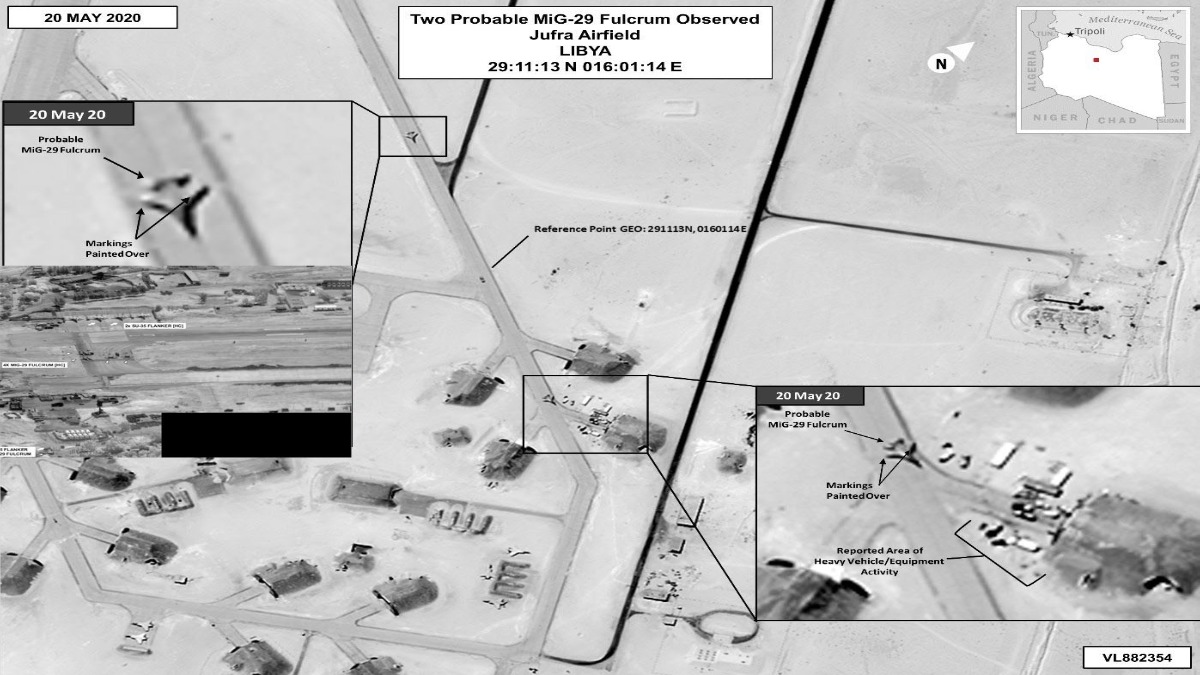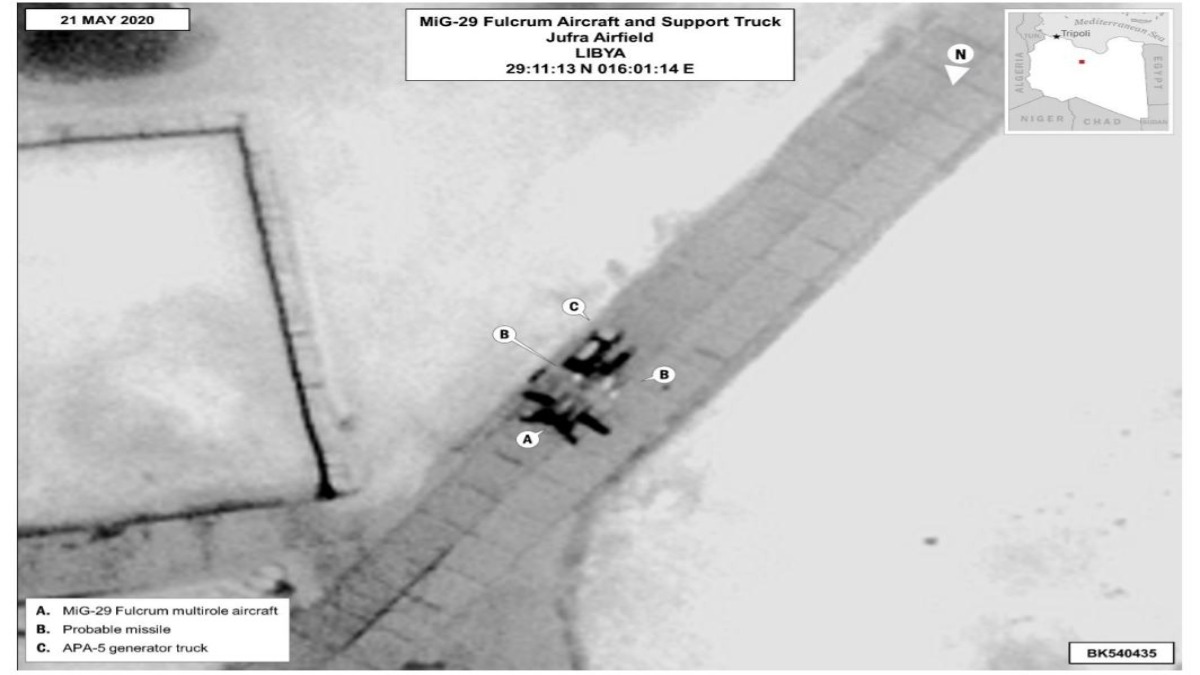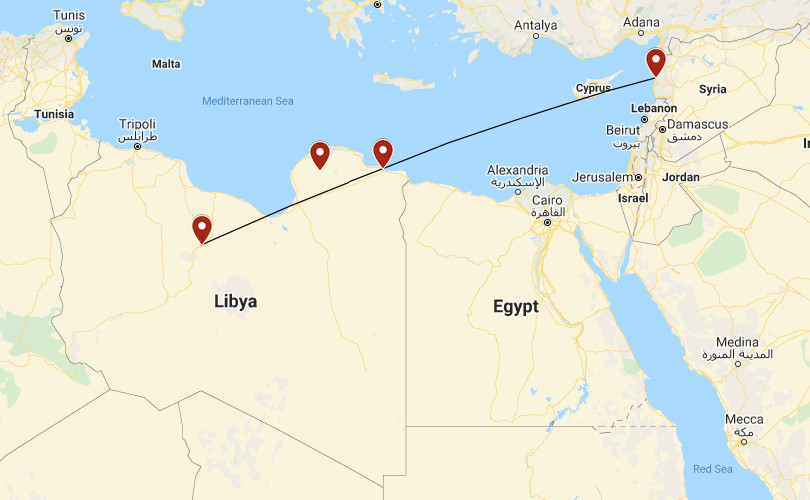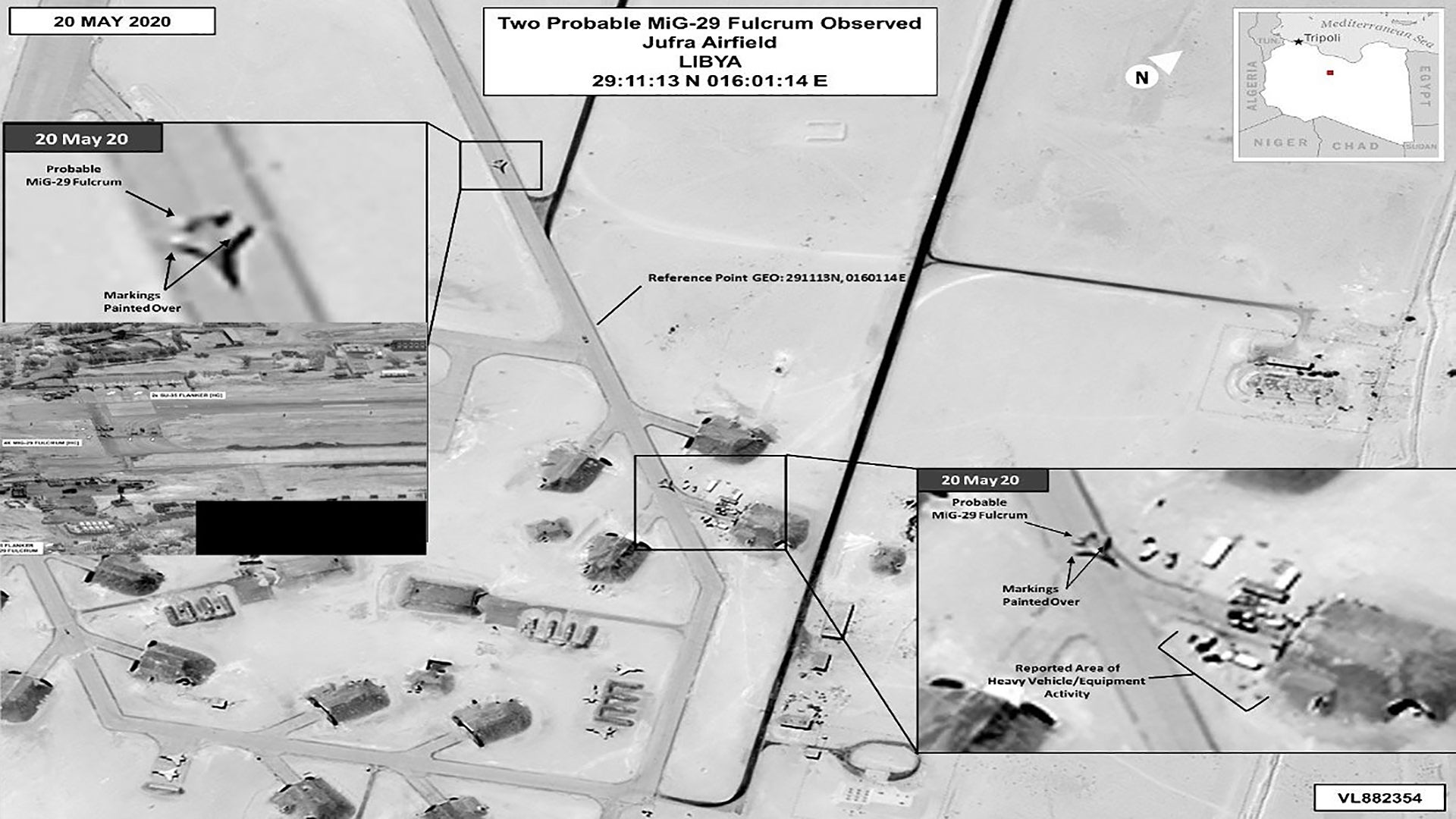The U.S. military’s top command for operations in Africa says that Russia has sent at least 14 combat jets to Libya and that Russian military pilots are flying them. It has also released additional satellite imagery shot last week showing two MiG-29 Fulcrums at Al Jufrah Air Base in the center of that country. This comes a day after it first revealed evidence that the Kremlin had sent the aircraft to bolster forces fighting on behalf of strongman Khalifa Haftar against Libya’s U.N.-recognized government.
U.S. Africa Command (AFRICOM) Tweeted out the new imagery and information on May 27, 2020. The satellite images are dated May 20, a day before the first reports began to emerge that Russian MiG-29s, as well as Su-24 Fencers, had touched down in Libya.
“Over multiple days in May, Russian MiG 29s and SU-24 fighters departed Russia. At that time, all the aircraft have Russian Federation Air Force markings,” one of the Tweets reads. “After they land at Khmeimin Air Base in Syria, the MiG 29s are repainted and emerge with no national markings.”
“They are flown by Russian military members & escorted by Russian fighters based in Syria to Libya, landing in Eastern Libya near Tobruk for fuel,” another Tweet continues. “At least 14 newly unmarked Russian aircraft are then delivered to Al Jufra Air Base in Libya.”


The satellite images show various supporting equipment, including at least one APA-5 generator truck, used for starting aircraft engines on the ground, also in place at Al Jufrah. Some of this equipment is seen clustered around one of the hardened aircraft shelters at the southern end of the base. The War Zone had previously noted that MiG-29s and any other Russian aircraft were likely concealed in those structures for their protection, especially given the threat of strikes from armed Turkish drones.
Further satellite imagery from private intelligence firm ImageSat International that was shot on May 23 shows other developments at Al Jufrah that appears linked to the MiG-29 deployment. This includes the construction of a small motor pool near the hardened aircraft shelters that the Fulcrums are using and the erection of a new radar, which could help with basic air traffic control tasks, as well as improve general situational awareness of the skies in the vicinity, as operations at the base increase.
AFRICOM’s description of the pilots as “Russian military members” is interesting given that U.S. Army General Stephen Townsend, the command’s top officer, had described them as “Russian mercenary pilots flying Russian-supplied aircraft to bomb Libyans” in an official press release on May 26. This further points to Russia utilizing what we at The War Zone are calling “Little Green Planes” with, at best, semi-sheep-dipped pilots and support personnel in Libya.
This is well in line with the Kremlin’s previous employment of “volunteer” ground forces in Ukraine, the first of which that appeared in Crimea in 2014 were dubbed “Little Green Men,” as well as nominally independent private military contractors, who have strong links to Russian intelligence agencies and senior Kremlin officials, in that country and in Syria, among other locales. Wagner, the best known of the private military companies, has been operating in Libya alongside Haftar’s Libyan National Army (LNA) since around 2018.
The LNA has its main hub in the eastern city of Tobruk and has also received support from the United Arab Emirates and Egypt, among others. It has been fighting a civil war against the U.N.-backed Government of National Accord (GNA), which resides in the internationally-recognized capital Tripoli. Turkey has stepped up its involvement in the conflict in the last year or so and has become the GNA’s main ally.
The new detail that the Russian combat jets made stops in Tobruk before continuing on to other locations in Libya also fills in an important gap in the previously available information. It is around 1,300 miles from Russia’s Khmeimim Air Base in Syria to Al Jufrah in Libya, which is largely beyond the maximum range for many MiG-29 variants. It was not previously clear how the aircraft would have been able to make the hop without the benefit of aerial refueling or landing and refueling somewhere.
Tobruk, in the far northeastern corner of Libya, situated less than 80 miles from the Egyptian border, is around 725 miles from Khmeimim, a much more manageable trip for the MiG-29s. From Tobruk, it’s around 510 more miles to Al Jufrah. It’s less than 165 miles from Tobruk to Al Khadim Air Base, where other satellite imagery suggests at least some of the Su-24s have deployed.

All told, Russia seems to have intervened in Libya in a new and big way that will have significant ramifications for the conflict going forward. The Kremlin’s immediate impetus seems to have been to stabilize the position of Haftar, a strongman friendly to Moscow, just as it did in Syria on behalf of Bashar Al Assad in 2015, which also started with a major infusion of combat aircraft. The LNA has suffered a number of serious defeats and other setbacks against Turkish-backed GNA-aligned forces in recent weeks.
In the past few days, there have been indications that LNA forces, including Wagner mercenaries, have been evacuating from the city of Bani Walid, situated some 90 miles southeast of Tripoli, and moving further southeast toward the greater Al Jufrah district. This would make good sense as it would put them closer to the added protective air cover that the Russian jets can now provide from while operating from the air base in that region.
However, it seems unlikely that Haftar, who rejected a Russian-Turkish brokered ceasefire deal in January, has given up his designs on taking over the country. Last week, the LNA also promised to launch an unprecedented air campaign against the GNA and allies, including Turkish forces in Libya.
With Russian airpower behind Haftar’s aims, the conflict is likely to escalate even more now. What that might mean if Turkey’s troops, or ships offshore, were to come under fire remains to be seen, but a flare-up in Syria earlier this year shows that officials in Ankara are unlikely to back down in pursuit of their own geopolitical aims. NATO member Turkey’s response to Haftar gaining substantial aerial might be in the form of Russian tactical jets may be to insert its own high-performance fighter aircraft into the conflict, which would set the stage for one remarkably complex and volatile proxy war right on NATO’s doorstep.
Contact the author: joe@thedrive.com
